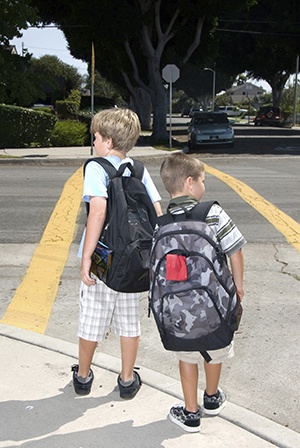Universal Design for Learning

I love Universal Design. My favorite example of this principle to make “…products, environments, operational systems, and services welcoming and usable to the most diverse range of people possible…” is the sidewalk ramp (U.S. Department of Labor). Those of us of a certain age recall thumping our bikes over curbs in order to cross intersections because there were no ramps. Enter the Americans with Disabilities Act (1990) that requires buildings and public way-fares to be accessible to all. Today’s ramps, with rubberized rumble strips to prevent skidding, now serve all of us, from bicycles to baby strollers and wheeled luggage to wheelchairs. It is this accessibility, born of inclusiveness, that makes our classrooms, playgrounds, streets, theaters, office buildings, and homes better places to live, work, and learn for all of us.
Universal Design for Learning (UDL), often associated with using technology to improve accessibility for all learners, applies that principle to the classroom. However, the instructional design choices available can often include low-tech solutions. Small-group instruction and graphic organizers provide flexible options in addition to embedded internet hyperlinks and text to speech translators. UDL has much more to do with how a teacher thinks about his or her students’ learning than it does with using iPads, YouTube, or Google Docs to create a final product.
To that end, check out The Center for Applied Special Technology (CAST) in Wakefield, MA, an organization that offers more about how to harness UDL to help all students learn than any other site I’ve found. I especially like their Top 5 UDL Tips for Learning Environments to making a lesson’s goals accessible to all through considering the classroom itself. These tips helped me expand my thinking about KTL’s Writing Assignment Guide (WAG). The WAG uses UDL to require teachers to think about what aspects of the activity or assignment will need to be scaffolded, how will small grouping be handled, what resources need to be made available to students in order to complete the assignment, etc.?
CAST’s 5 Tips urges teachers to think about lesson goals from a classroom environment perspective in order to support the same detail-oriented thinking about a goal that a WAG does, only from a bit more global view…how does the entire classroom support the goal, how will resources be made accessible to everyone, how is the learning process reflected in the overall environment, how will digital resources be integrated into the goals, how will access to the lesson goals be ensured for all. In thinking about how the nuts and bolts of a lesson are accessed by all students, not just those who require accommodation, teachers must fully vet their planning. CAST asks that teachers add a big picture perspective to their planning by considering the 5 UDL tips to ensure that learning outcomes bridge the gap between the curriculum standards and the assignment. When creating your writing activities or assignments, ask yourself how will the environment support the WAG components you have so carefully thought about? It’s about the sidewalks, Siri.

Leave a Reply